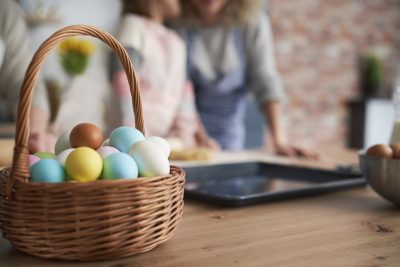Quick Look
- Retirement may seem like a long way off but due to the power of compounding returns, it’s incredibly important to start as early as you can.
- You can’t “save” your way to retirement; you must “invest” your way there.
- Achieving almost any retirement lifestyle is possible if you give your investments (whatever they may be) the time to mature, so starting as early as you can is key.
Contents
Planting the Seeds of Saving & Investing
If you’re working through the tasks in the “Security” tier of your MoneySwell plan, saving and investing for retirement may not be a priority yet. However, it’s still important that you conceptually understand key aspects of long-term retirement saving. Specifically, you should fully understand and appreciate the value of starting early. You should understand that long-term “saving” is actually about “investing.” You should understand some basic mechanics of how to invest what you save. And if you get all this, when you’re ready to prioritize long-term saving, you won’t be intimidated when the time comes.
Here we go!
Defining “Retirement”
Whether you have a “traditional” view of retirement (work for 40 years then live off investments, savings, and Social Security), more of a FIRE mindset (possibly “retiring” early but continuing to work in a way that is much more amenable to your desired lifestyle), or some combination of the two, you need to plan and you need to invest in your future self. Yes, views on “retirement” have changed. But making a plan is just as valuable as it ever has been.
Start Early, Because…
- You Can’t Work Forever: Many start retirement not because they’re ready, but because they have no other choice.
 Common reasons for retiring earlier than expected include being laid off, failing health, needing to take care of other family members, or simply becoming dissatisfied with your career. So whether you retire at your expected age or are forced to stop working earlier than you anticipated, the earlier you start to save the more prepared you’ll be.
Common reasons for retiring earlier than expected include being laid off, failing health, needing to take care of other family members, or simply becoming dissatisfied with your career. So whether you retire at your expected age or are forced to stop working earlier than you anticipated, the earlier you start to save the more prepared you’ll be.
- Compounding Returns Need Time to Mature: Compounding returns is the idea that your money makes interest, and then that interest makes money on itself. This means that the growth of your money is constantly accelerating. And – all things being equal – every extra month or year that you let your money accelerate will have an outsized impact on the total amount of growth. What does that mean in the real world? Here’s an example:
Example – Saving for 10 Extra Years at a 7.5% interest rate
| Total Saving Duration | Total Saving Amount | Total Value At End of Saving Period | |
| Early $200k Saver | 40 years | $200,000 (~$417 monthly) | $1,137,192 |
| Late $200k Saver | 30 years | $200,000 (~$555 monthly) | $688,640 |
| Late $300k Saver | 30 years | $300,000 (~$833 monthly) | $1,033,580 |
In the example above, notice how the longest savings duration (40 years) saved less each month, but ended up with more in the end. Specifically, the “Late $200k Saver” saved the same total amount ($200k), but had to save more each month ($555 vs. $417) during the years he saved. But he still ended up with nearly $450k less in the end!
On the other hand, we have another “Late Saver” in row three. Even though this person saved nearly double on a monthly basis, and saved $100k more overall, simply because the “Late $300k Saver” started later, he still ended up with about $100,000 less than the “Early $200k Saver.”
You can try out your own scenarios here by leveraging a classic compound interest calculator. Alternatively, input some hypothetical (or real) savings goals in the MoneySwell Retirement Planner. Then review the Future Outlook table lower on the page to see the impact of specific compounding returns. Notice the significant changes every year toward the end of the table. The earlier you start, the earlier these massive changes to your investments will come to fruition.
This represents the power of compounding returns. So remember, the best time to start saving (and investing) was yesterday. But the next best time to start is today. It’s never too late!
“Saving” Isn’t Enough – You Must Invest

Historically, broad market index funds invested for 15 years or more have consistently shown positive results.
“Investing” can sound scary and risky, and “saving” can sound comforting and safe. But for long-term time horizons (15 years or more) the opposite is true. If your goal is to have a comfortable retirement, dropping money in a savings account and hoping for the best is guaranteeing a terrible outcome. Due to inflation eroding the value of your dollars, a savings account probably won’t even preserve what you have let alone grow to something more.
We’ll dive into the details (and assumptions) of this later. But for the time being, just glance at the table below to understand the potential impact of saving vs. investing.
Example – Saver vs. Investor, who would you rather be?
| Annual Contribution Amount | Possible Long-term Average Annual Return After Inflation | Total Value After 40 Years | |
| Saver (Uses Savings Account) | $5,000 | 1% – this is optimistic! | $244,434 |
| Investor (Invests in “Market”) | $5,000 | 6% – this is conservative! | $773,816 |
It’s not hard to see who comes out ahead in the above scenario. We’ll guide you through more detail on investing when the time is right. But if you’re nervous now, take stock (pun intended) of the following points:
- The worst 15 year annualized return of the S&P 500 Index (a common benchmark for measuring the “Stock Market”), was a positive 3.7%. The best was 20%.
- A diversified portfolio of stocks (in the form of Index Funds), with low fees is one of the surest ways to let your money grow over the long-term.
- With Index Funds, Target Date Funds and other similar investing products, it has never been easier to achieve a broadly diversified portfolio – and your MoneySwell plan will help you easily learn how to do it.
Ways to Save & Invest for Retirement
There are typically four main ways people save and invest for their retirement. They include:
- “The Market” – This is shorthand for people investing in publicly traded stocks and bonds. This is by far the most common way to “save” for retirement. We’ll talk about this in more detail in later tasks.
- Real Estate – This could be a direct home, condo, or townhouse purchase that you use to generate rental income or sell for a greater value than you purchased it for years later.
- Annuities – These are investments sold through insurance companies that offer a guaranteed income stream once the annuitization phase has been reached.
- Direct Small Business Investing – You can work out an arrangement to invest in small, privately owned companies. This exposes you to a lot of risk but also creates the potential for outsized returns.
Of the four options above, future tasks in the MoneySwell Financial Priorities Action Plan will primarily focus on “The Market” option. The reason for this is A) it’s the most common way to save and invest for retirement, B) you can get started with only a few dollars, C) historically it has provided some of the best and most consistent returns on investment over longer time horizons.
Conclusion – What do Do Now
Now that you have a generalized understanding of long-term retirement savings, you may be tempted to get started. However, if you have high-interest debt, consider prioritize paying that off before retirement savings. The reason is that carrying high-interest debt is likely to cost you more than what you could earn if you invested that money.
That being said, if you don’t have much high-interest debt or know you will pay it off within a short time horizon, you could consider starting a retirement account and investing a small amount (e.g. just $100) just to get the ball rolling while you’re thinking about it.

Like the eggs in this basket, an index fund is essentially a collection of stocks grouped into one container that you can purchase.
(We don’t recommend starting with individual stocks. Individual stocks carry too much risk – particularly when you still have high-interest debt to pay off. Instead, start with a broad market index fund, a target date fund or similar. Read more here.)
Finally, if you work for a company that will match some portion of your retirement account contributions, this can also be a good reason to invest (at least a little) even if you have high-interest debt. The reason is that this “match” is literally free money and it can potentially make up for additional interest costs you will be charged by paying down your debt a little more slowly than you otherwise would. But the catch is that to get the “free money” you have to put in some of your own money first.